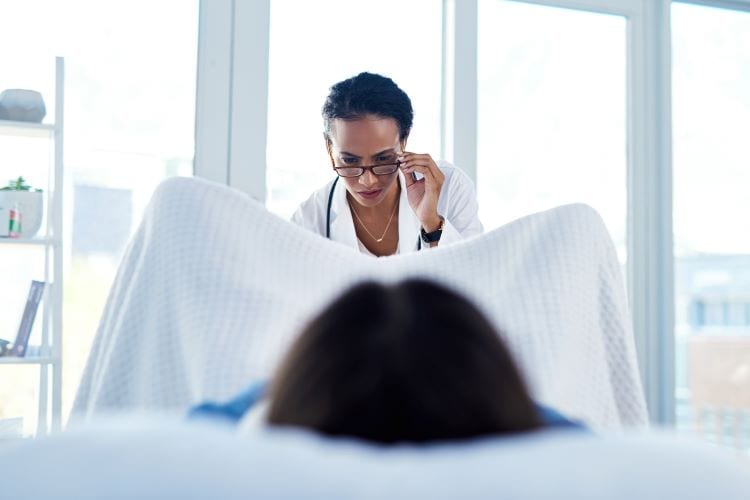Bimanual Pelvic Exams and Pap Tests among Girls and Young Women

Millions of bimanual pelvic exams and Pap tests performed on girls and young women in the United States are most likely unnecessary.
Millions of bimanual pelvic exams and Pap tests performed on girls and young women in the United States are most likely unnecessary. Bimanual pelvic exams and Pap tests can lead to several harms.
What Are Bimanual Pelvic Exams and Pap Tests?
A bimanual pelvic examination (BPE) is used to check a woman’s internal pelvic organs. The health care provider inserts two fingers into the vagina and then places pressure with the other hand to the lower part of the belly.
The American College of Obstetricians and Gynecologists recommends BPEs only if young women have a medical history or certain symptoms like pelvic pain and unusual bleeding. The American College of Physicians and the American Academy of Family Physicians do not recommend performing BPEs in women who are not pregnant and are not having health problems.
BPEs are not recommended before prescribing most hormonal contraceptives (including birth control pills), or during screening for sexually transmitted infections.
A Pap test is used to check for cervical cancer by placing a speculum (medical tool) inside the vagina to collect cells from the cervix.
Cervical cancer screening is not recommended for women younger than 21 years, according to leading professional organizations.
The Harms of Unnecessary Tests
Unnecessary BPE and Pap tests could cause several harms, such as—
- Fear.
- Anxiety.
- A false positive test result (a test result that tells you a disease or condition is present, in reality, there is no disease).
- Unnecessary treatments.
- Unnecessary costs.
Given these possible harms, it’s important for girls and young women to receive BPEs and Pap tests only when necessary. BPEs and Pap tests should be a shared decision between the patient and the health care provider.
About the Study
CDC researchers used data from the National Survey of Family Growth to estimate the number of potentially unnecessary tests in young women aged 15 to 20 years in the United States. The data were combined from the years 2011 to 2017.
Survey participants were asked if they had received a Pap test or a BPE in the past 12 months.
The BPEs were classified as either medically indicated (the test was necessary) or potentially unnecessary.
The exam was considered medically indicated if the girl or young woman—
- Was pregnant.
- Used an intrauterine contraceptive device (IUD).
- Received the test because of a medical problem.
- Received treatment for a sexually transmitted infection such as chlamydia, gonorrhea, syphilis, or genital herpes.
What the Study Found
The study estimated that 1.4 million BPEs and 1.6 million Pap tests performed on U.S. females aged 15 to 20 years in a single year may have been medically unnecessary.
The study also found—
- Young women who had a Pap test were 7 times more likely to report also receiving a BPE, compared with young women who did not have a Pap test.
- Young women who had been screened for a sexually transmitted infection were 4 times more likely to receive a Pap test and 60% more likely to receive a BPE, compared with young women who had not been screened.
- Young women who used a hormonal contraception method other than an IUD were 75% more likely to receive a Pap test and 31% more likely to receive a BPE, compared with young women who did not use non-IUD hormonal contraception methods.
Why This Matters
BPE and Pap tests may cause harms including anxiety, false-positive findings, overdiagnosis, and unnecessary treatment and costs. These harms may be greater in the screening setting when the tests in question have limited evidence of benefit, such as the BPE and Pap tests in women younger than 21 years.
The study concluded that efforts to avoid unnecessary BPE and Pap tests among girls and young women could include—
- Educating health care providers and women about when exams and tests are necessary.
- Encouraging parents and patients to ask healthcare providers about when exams are appropriate.
- Making a shared decision between the patient and the health care provider about whether exams and tests are necessary.
Citation
Qin J, Saraiya M, Martinez G, Sawaya GF. Prevalence of potentially unnecessary bimanual pelvic examinations and Papanicolaou tests among adolescent girls and young women aged 15–20 years in the United States. JAMA Internal Medicine 2020;180(2):274–280. DOI: 10.1001/jamainternmed.2019.5727.